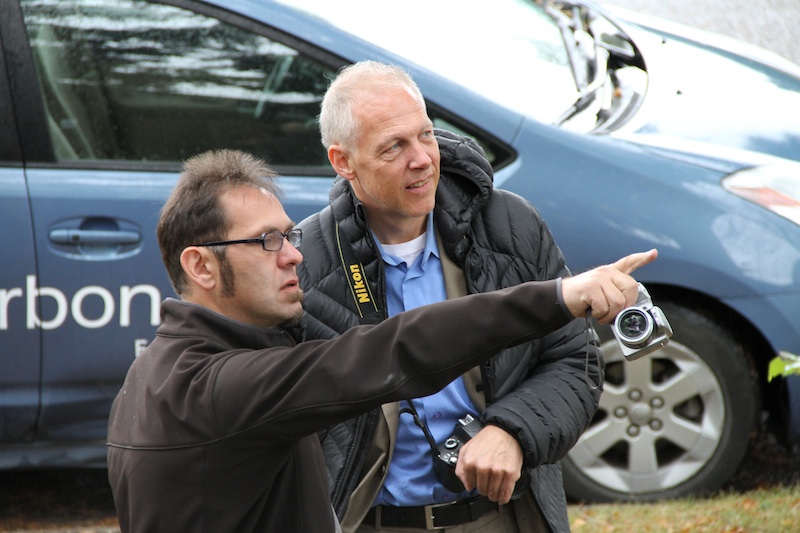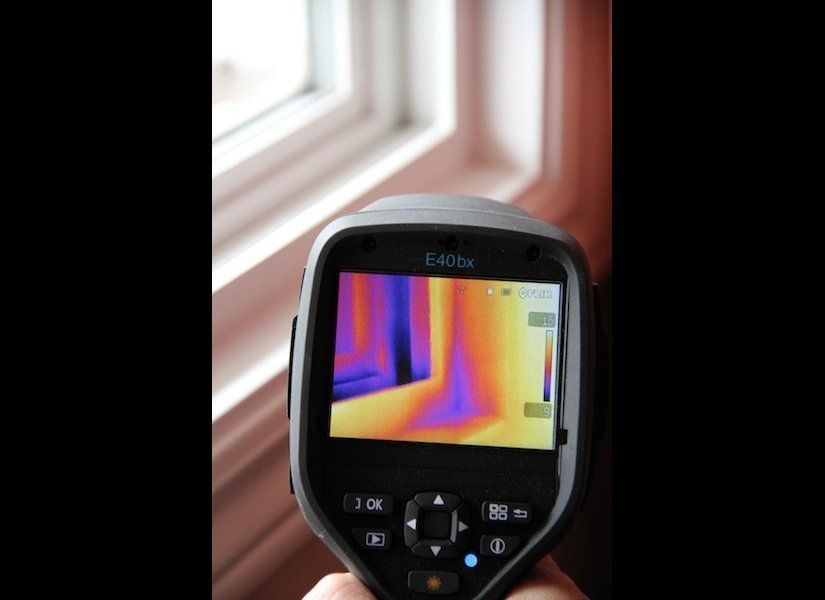
Think of Godo Stoyke as a modern day, energy efficiency obsessed version of Van Helsing. He's ready to slay the power vampires in your home and seek out energy savings big and small.
What's a power vampire? It's a device that "sucks energy and doesn't give you anything in return," says Stoyke, the director of carbon of C Returns, a non-profit group dedicated to providing a one-stop shop to green homes and buildings.
Stoyke wrote the book The Carbon Buster's Home Energy Handbook and has been slugging it out in the energy efficiency world for a long time. He recently started C Returns along with partners Shantu Mano and Anna Bubel to help regular folks find experienced auditors, research and select appropriate energy efficient devices, supervise construction, arrange financing and apply for rebates from the various levels of government.
If you own a home or a business and want to use less energy, you should get a hold of C Returns.
But back to the sexy part, the vampires. It turns out these things are ubiquitous. Think of your computers, printers, PVRs, modems, routers, video game systems, cell phone chargers and laptop chargers. Houses can have up 25 of these little power supplies and these energy suckers can account for as much as 10 per cent of your electricity use in a home.
The Power of an Energy Efficiency Audit
We tagged along while C Returns auditor Rob Gawreletz conducted a thorough energy audit of Ted Wolff's 55-year-old bungalow in Edmonton, Alberta.
Gawreletz, armed with his Watt-O-Meter and a clipboard, starts off in the small home office looking for power suckers. Plugging a laser printer into his watt meter Gawreletz finds that the printer uses 7 watts of energy just sitting there waiting to print.
As part of C Returns comprehensive home energy audit Gawreletz tests all of the lights in the house. In the living room he strikes energy efficiency pay dirt as he finds a 300-watt halogen bulb in a floor lamp that only shines light onto the ceiling. You can change the bulb to a CFL or LED with a much lower wattage or replace the fixture to get a more effective light source.
Everyone uses lighting and it accounts for five to 15 per cent of home energy use says Stoyke. And today there are plenty of excellent energy efficient lights from the inexpensive compact fluorescent bulbs to the rapidly emerging super energy efficient LEDs.
"If every family in Alberta were to install just four of these CFLs you would save as much carbon as taking 130,000 cars off the road for a year," says Stoyke. Check out our episode on green lighting basics to get a handle on this subject.
Next up are appliances. The washer, dryer, fridge, stove and freezer each account for about 12 per cent of home electricity use in Alberta for a whopping total of 60 per cent.
Stoyke zeroes in on the front load washer as an example.
"Because they have a horizontal spin they need much less water and that means less energy to heat the water, that's a 60 per cent savings."
Of course some of these savings are in natural gas, but there are significant electricity bill savings available in many energy efficient appliances. Check EnerGuide labels to find the energy miser appliances out there. And yes, using your 1970s fridge as a bar fridge is a really bad idea if you are trying to conserve energy.
We discovered the wonders of the induction stove in my own home this year. Although we didn't make the purchase for the payback, our induction stove features an Energuide rating of 350 kilwatts per year, about half the rating of conventional stove models. Oh and the induction stove is a joy to cook on, clean up and is the preferred choice of chefs.
Stoyke says one of the most important items in the home is still the furnace and if you live in a 20-40 year-old home it's a good idea to have it checked out. Stoyke says there are still 70 per cent efficient furnaces in many homes and if you replace it with a new 93-98 per cent efficient furnace you can save 23-28 per cent on your heating costs. The new furnaces also have energy efficient DC motors that save on electricity too.
The Blower Door Test
Perhaps the least sexy but most important aspect of your home is its insulation and air sealing. To find leaks Gawrelez pulls out a big red fake door seal that has a round hole for a large fan in it. After carefully replacing the front door with the blower, he turns it on in order to get negative pressure in the house.
With his infared camera in hand he checks for cold air infiltration around windows, plugs, light switches, the attic hatch and even in the walls. Once inventoried a little work with insulation and caulking can cut down leaks by a significant amount.
Seal up that attic hatch and add insulation to the attic and before you know it you have cut down on those pesky cold air drafts that seem to come out of nowhere costing you money and making you feel chilly.
10 Best Tips to Save Energy at Home
1. Furnace
a) Furnace Tune Up - $150-$200 - 2.5 year payback
b) Furnace replacement - $7,000 - 7 year payback, if old furnace near end-of-life (this includes $2,000 of non-energy related code upgrades.
2. Washing Machine - $600-$1,000 - 8-month payback based on incremental cost for front load washer
3. Lights -
a) $150-$200 (DIY) for CFLs - 1.7 year payback
b) Lights - $840 (DIY) for LEDs - 14 year payback
4. Water
a) Showerheads - $30-$60 (DIY) - 0.5 year payback - save $60 per year
b) Toilet (low flow) - $400 - 5.8 year payback
5. Draft proofing -$500 ($150 if you go DIY) electric outlets, windows, doors, attic hatch - 9-year payback, 2.7 year DIY
6. Attic Insulation - $1,800 - 32 year payback, 6-year packback if DIY
7. Windows - cost $10,700 - 61-year payback
8. Slay your power vampires - use a power bar to turn off your printer and other devices when not in use - save up to 10 per cent on electricity - quick payback; as little as 6 months
9. Solar PV array - $17,024 for 2.8 kilowatt system - 32-year payback
10. Switch from mini van to Prius C hybrid - $22,450 incremental cost 4.1-year payback
(DIY = do it yourself)
All of these examples come from a very specific example, 55-year-old Wolff bungalow, and will not apply to you.
Some changes you can make in your home offer very fast payback, such as compact fluorescent light bulbs, low-flow showerheads or a furnace tune up. But just because windows have a long payback doesn't mean you shouldn't replace them if it's time for them to go.
Environmental returns
If you are interested in reducing your carbon emissions, the picture changes dramatically. And the results on payback don't always line up with the results on reducing your CO2. For instance a solar photovoltaic system can save 187 tonnes of emissions over the life of the system, making it one of the best steps in this area, the payback period however is a long one.
Check the Quick Facts Tab on this episode's homepage for a list of some of the best steps you can take to reduce carbon emissions in your home.
Payback can be a tricky exercise. It depends on factors such as: efficiency of current furnace, nearness to end-of-life of the item, size of house/current consumption, number of family members, number of showers in house and one of the biggest ones - your behaviour.
The other wildcards are those pesky power vampires sucking the energy out of your system and offering little or nothing in return.
Hit the off switch on the dishwasher that leaves a bank of lights on when it's done, or better yet don't buy items that use energy for nothing. Use power bars to turn appliances, printers and power supplies all the way off when not in use. Your idle printer could be using seven watts all day and all night while it just sits there waiting to do some work.
It's going to vary significantly from home to home, but by getting an energy audit and making a few smart changes to your home Rob Gawreletz says you could save as much as 60 per cent on your energy bill.
Whether you want to reduce your carbon emissions or spend less money on your gas, electricity and water bills an audit is a powerful tool to help you make the necessary decisions. Whatever issue you're more concerned with a good audit will make it clear what the best plan of action is.
